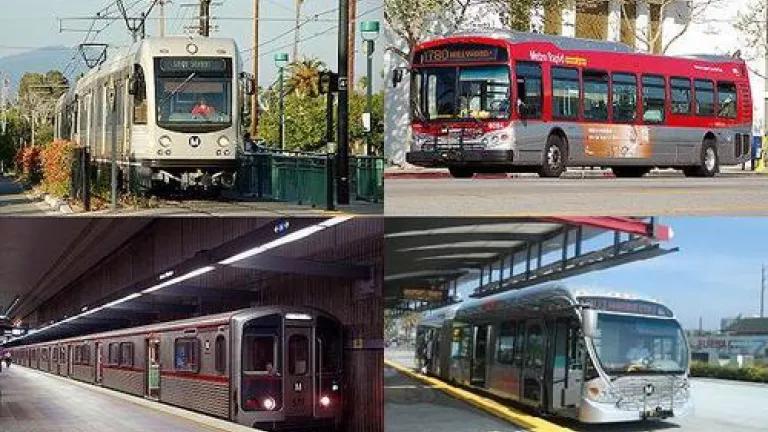
Bus riders comprise 50% of all transit riders, and they outnumber the number of heavy rail, light rail, commuter bus, and trolley riders combined. Yet attention to bus service pales in comparison to that offered to light rail. Given the cost advantages and benefits offered by buses, cities may want to re-focus on buses.
According to Joshua L. Schank, President and CEO of the Eno Center for Transportation, bus service is not a primary focus for many city transportation officials:
In the six cases examined, we conducted off the record interviews with public officials, general managers, and thought leaders in each region. One of the consistent themes that emerged was that the bus systems and bus passengers were an afterthought. In every region - Chicago, New York, Boston, Minneapolis/St. Paul, Dallas/Ft. Worth, and the Bay Area - rail was the primary focus of virtually everyone we interviewed. We also found that maps of the regional transit networks tellingly either included a jumbled mess of bus routes behind a clean rail network or ignored bus altogether.
Why is there a bias against buses? Schank contends that it may exist because buses systems are not commonly seen as catalysts for transit-oriented development (TOD). Indeed the industry holds the view that "rail transit, all other things being equal, attracts more intense development and increases return on investment." Consequently, TOD initiatives have generally been focused on rail as opposed to bus systems.
The anti-bus sentiment may also have something to do with the negative perception of buses among non-riders. A study conducted by the Scottish government on barriers to bus ridership found personal safety, cleanliness and comfort of buses, and reliability to be common concerns among non-users. Transit activist Bill Lind similarly claims that middle-class Americans do not ride the bus because the bus-riding experience is not comfortable enough to entice rail riders or car drivers. This lack of rider interest contributes to less institutional attention to buses.
Cities should capitalize on the many benefits of bus systems. Like rail, buses offer environmental benefits and congestion relief by reducing single-occupancy vehicle use. And bus systems can require less capital to implement and expand. This fact may prove valuable to municipalities struggling to provide transit service in the face of shrinking budgets and increased service demand. Faced with this reality, cities have been forced to raise fares or cut service in over 85% of transit systems.
LA's transit agency offers array of transportation choices (image from wikicommons)
Institutional commitment and investment can make a difference; transit authorities have been able to successfully transform the negative image of buses. Houston's Metropolitan Transit Authority, for example, recently redesigned its bus network so that stops will be serviced every 15 minutes, 7 days a week. This increase in frequency will help improve the overall image of the bus system, and is expected to boost ridership by 20%. In another example, the Los Angeles County Metropolitan Transportation Authority famously re-branded its bus system to make it more fun and approachable. This facelift included painting the buses an eye-popping red or blue, new decal, and redesigned signage at bus stations. The strategy worked - surveys indicate that Metro's image is improving, and discretionary ridership has increased from 22% to 29%, an increase that is twice the national average. Houston and Los Angeles County demonstrate that the attitudes regarding buses can be changed with a makeover.
With increased interest in public transit but reduced funding for transit initiatives, cities should be open to all possible solutions for meeting citizen needs, including re-focusing on bus systems. Buses can serve as a cost-effective and even fun means for mobility - if we encourage it.
Janie Nham is a sustainability advocate in Washington, DC. This past year, she served as the Washington Area Bicyclist Association's Policy Fellow and as a citizen advisor to the National Capital Region Transportation Planning Board.
